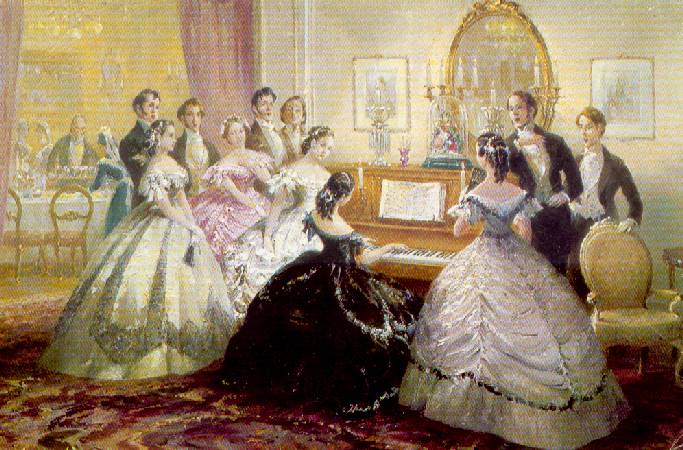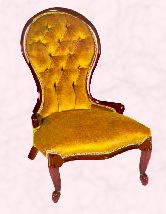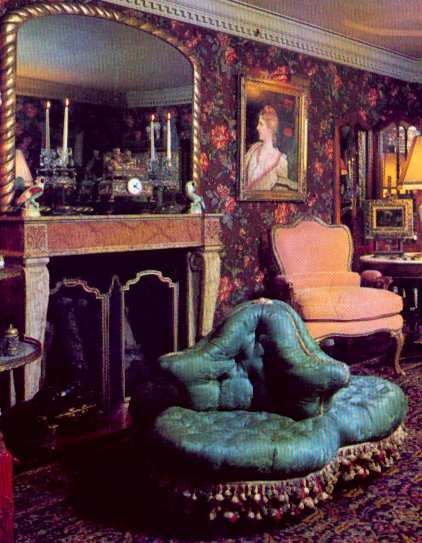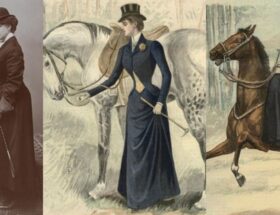Prosperity Shown in Interiors
All the changes happening in industry and transport brought a new kind of prosperity to Britain and many people chose to show this prosperity in their homelife.
The Victorians associated the clutter of ornamentation and ostentatious display with wealth and so crammed their homes with furniture, bric-a-brac, and pianos to show their refinement and taste.
It shows the ostentatious display of wealth through costume, ownership of a piano, and other objects.
The glorious full-skirted evening dresses belong at the pinnacle of the fashion history of the crinoline when fullness in skirts had started to move to the back of dresses.

Image is of Airs and Graces by Vernon Ward.
Heavy Furniture in Homes

The taste for heavy balloon-type furniture may have been a reaction to the earlier lighter Regency furniture.
Mahogany framed sofas were magnificent. Beautiful carving highlighted the vast mahogany curves.
French polished rooms were liked and sometimes rosewood was used as darker woods were fashionable.
Vastness of scale in home furniture was essential because from 1840 from the waist down, women looked like bells. They needed big generous seats to spread their wide expanding skirts. Seat backs were rounded forms. The balloon back chair born in the 1830s remained popular until the 1860s.
In the 1850s the bentwood chair became popular. The pretty decorative paper-mâché chair inlaid with mother-of-pearl, cane seated, scrolled, and gilded also reached its peak in these days.
By the mid 1850sstaircases also became wider and they helped accommodate crinoline skirts. Ladies swept downstairs in a flurry of petticoats.
A double seat called the tête a tête enabled women to spread their skirts to help prevent crushing and flirting with a man at the same time without being compromised by sitting too closely. The separating backrest prevented bodies from touching and was ideal for couples getting to know each other in a restrained respectable way.
A Cluttered Home Life

Home interiors were quite dark with busily patterned wallpaper. From a picture rail hung oil paintings, etchings, engravings, silhouettes, watercolors, stitched needlework samplers and hand-embroidered reproductions of famous paintings.
Sunlight was kept out of the already dark room by layers of blinds, lace curtains, velvet drapes, and side curtains in dark colors. The brass ringed curtains hung on great poles, but often remained drawn on bright days.
Homelife Reflects Arrival in Social Terms
The clutter of furniture and ornaments was reflected in the huge-looking glasses. Furniture and shelves were covered with fringed, beaded cloths and runners.
The more a home could be overfilled with china, domed wax flowers, stuffed birds, and trinket boxes, the more homelife could be reflected in mirrors, and the more it showed its owner had arrived at the full Victorian lifestyle.
Victorian Status Through Homelife
Status was reflected in the purchase of items for the home. Status was reflected in the size of a home. Status meant having home servants. Status meant house parties where prosperity in home life could be shown off to others. Status was so important that the home lifestyle was truly invented by wealthy Victorians.

